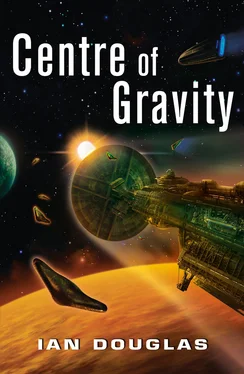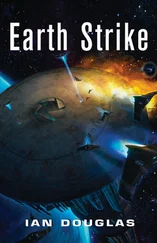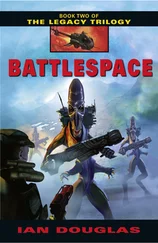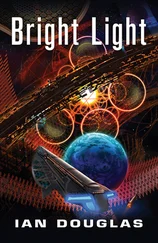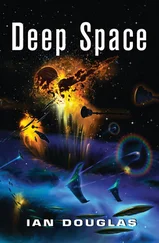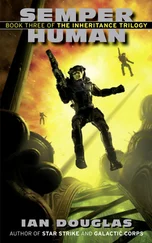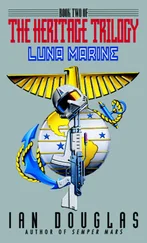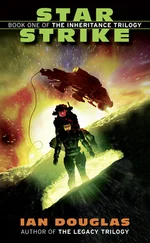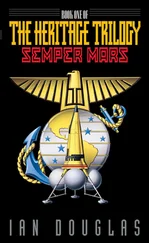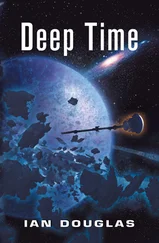Thousands of people—Prims and squatties, like Gray in his former life—had lived within the ruins, comprising a modern-day hunter-gatherer society largely ignored by the civilized folk inland.
Gray wondered how many had survived the tidal wave … how many of the people he’d once called family and friends survived.
And the civilized communities here had suffered as well. The tidal wave had swept across Morningside Heights, bringing down the kilometer-high tower of the Columbia Arcology. An instant after crossing the shoreline between the Manhat Ruins and Morningside Heights, Gray saw the mountain of rubble that was all that was left of Columbia.
Angela . …
She hadn’t been there when the tower had fallen. At least, he didn’t think so.
But he hadn’t heard, not for sure.
He forced his thoughts from that pain, focusing instead on his flying. At just above the speed of sound, the twelve spacecraft thundered across the Hudson River and past the Palisades Eudaimonium precisely on schedule.
The eudaimonium—the name came from the ancient Greek philosophical concept of perfect and complete happiness—was part of the Greater New New York complex north of Manhattan. Protected from the impactor tidal wave two months before by the towering walls of the Palisades overlooking the Hudson, it was the heart of the New City, a cluster of arcology towers, arches and skyways, domes, slabs, and floater habs housing 5 million people. Tonight, the local population had increased by at least a third. As the Starhawks roared past, Gray could see the lights and thronging crowds below, an ocean of people celebrating what had been rather grandiloquently billed as the “Yule of the Millennium.” The central Eudaimon Plaza appeared to be packed with celebrants; lasers arced across the sky amid the flicker and pop of fireworks. Tens of thousands of decorative lights created the impression of a galaxy picked out in reds, greens, and golds.
“Landing lights, people!” Allyn commanded, and the squadron lit up, twelve dazzling stars streaking across the darkening sky at five hundred meters. The sonic boom of the squadron’s passing must have rattled walls and transplas windows ten kilometers away.
The squadron over-flight had been timed to rattle those windows at seventeen precisely, kicking off the festivities at the arcology complex. Confederation Senate President Regis DuPont was down there, somewhere, as were the presidents of the North American Union, America del Sur, and Europe; a dozen Confederation senators; a host of VIPs from the military, from the Union capital at Columbus, Ohio; and even a handful of governors from extrasolar colony worlds—from Chiron, from Thoth, and even from Bifrost.
The party tonight was a very big affair.
Mission accomplished, the squadron banked and decelerated, making for the Giuliani Spaceport northwest of the city. A flotilla of civilian pubtran fliers was waiting for them there; the Dragonfires, too, had also been invited, though they’d be arriving at the party a few minutes late.
As he peeled off for final approach, morphing his Starhawk into landing configuration, Gray could only think about the person he’d left behind …
… About Angela.
ONI Special Research Division
Crisium, Luna
1201 hours, TFT
“What the hell do we know about the H’rulka?” Dr. Kane demanded.
“Not enough,” Wilkerson replied. “Not enough by about fifteen hundred parsecs.”
“Maybe your pets can shed some more light on the subject.”
“They are not,” Wilkerson replied evenly, “my pets .”
Until two months before, Dr. Phillip Wilkerson had been the head of the neuropsytherapy department on board the Confederation Star Carrier America . After the return from Eta Boötis, however, he’d been summarily transferred to the Office of Naval Intelligence—specifically to the xenosophontological research department, headquartered beneath the Mare Crisium on Earth’s moon. He’d brought with him eighteen Turusch POWs, and almost two thousand more had arrived shortly after—survivors of one of the big enemy asteroid-battleships disabled in the Defense of Earth.
The Turusch community now comprised a de facto alien colony occupying a former warehouse excavation two kilometers beneath the main Crisium dome, sealed off by airlocks and pumped full of a high-pressure atmosphere composed of CO 2, sulfur dioxide, carbonyl sulfide, water vapor, sulfuric acid droplets, and a mist of sulfur. The mist constantly cycled between its liquid and solid phases at temperatures close to the boiling point of water. The Turusch home planet was hypothesized to be, as Wilkerson himself had once suggested, a less extreme version of the planet Venus, with a thinner atmosphere bathed in heavy ultraviolet radiation from its parent star. For almost two months, Wilkerson had been working with the colony, leading a small army of xenosophontologists, linguists, and ETC AIs, trying to learn how the Turusch thought.
The task, he’d long ago decided, would not be complete anytime in this century.
Dr. Howard Kane was one of his project specialists, on loan from the ONI’s XS department. An unpleasant man with an acidly sarcastic attitude, he seemed to specialize in finding exactly the wrong thing to say to his colleagues. Wilkerson so far had managed to keep him from communicating directly with the Turusch. That task was difficult enough without bringing ego and attitude into the mix.
“This Crustal Tower message,” Kane said, “says a H’rulka ship has been spotted at Arcturus Station. “But as far as I can see, we don’t know jack about them.”
“The Turusch have mentioned the H’rulka during a number of sessions,” a third voice put in. “They state that the two species share key philosophical concepts.”
The invisible speaker was a specialist AI variously called Noam or, sometimes, “Chom,” after the twentieth-century linguist, cognitive scientist, and philosopher Avram Noam Chomsky.
“There was nothing else in Alan’s recording?” Wilkerson asked.
“No. The AI known as ‘Alan’ effectively ceased to exist upon partition.”
Wilkerson nodded understanding. An artificial intelligence like Noam, or like the smaller and more mission-specific AI on the Arcturus recon probe, required a certain size, a certain complexity of internal circuitry and processing power in order to maintain the electronic version of consciousness. Details were still sketchy, but the ISVR–120 interstellar probe apparently had elected to split itself into four separate parts. The probe hardware was designed to allow such a division in order to guarantee that its memory made it back home … but the circuitry carrying those memories simply wasn’t adequate to maintain something as complex as a Gödel 2500 artificial intelligence.
The AI Alan Turing had in effect committed suicide in order to get its information back to Sol.
Kane dragged down a virtual window, which glowed in the air in front of him and Wilkerson. The data file with what little was known about the H’rulka scrolled down the screen. “Floaters!” Kane said, reading. “The presumption is that they’re intelligent gas bags that evolved in the upper atmosphere of a gas giant.”
“Interesting, if true,” Wilkerson said, reading. “I’d like to know how they managed to develop a technology capable of building starships without access to metals, fire, smelting, solid raw materials, or solid ground.”
“What is it they’re supposed to share with the Tushies, Chom?” Kane asked.
“It is difficult to express,” Noam replied, “as are most Turusch concepts. It appears, however, to be a philosophy based on the concept of depth .”
Читать дальше
